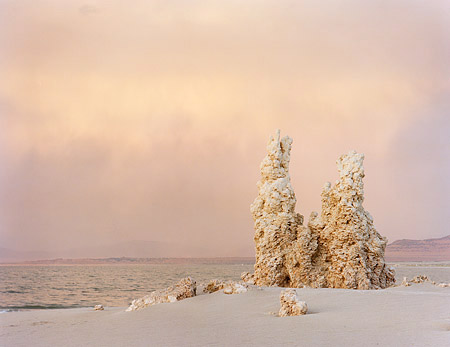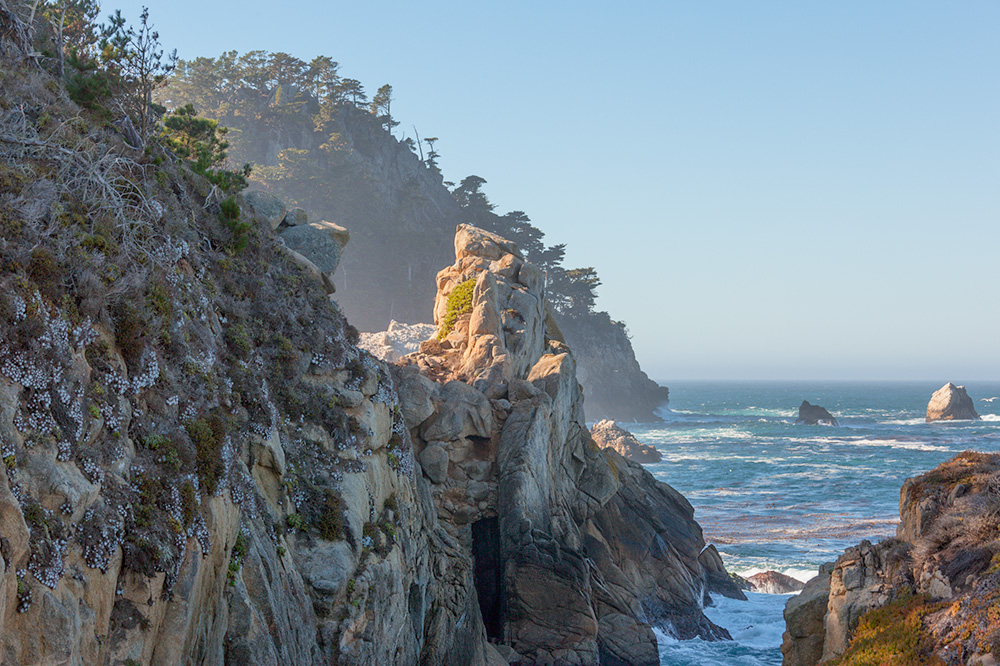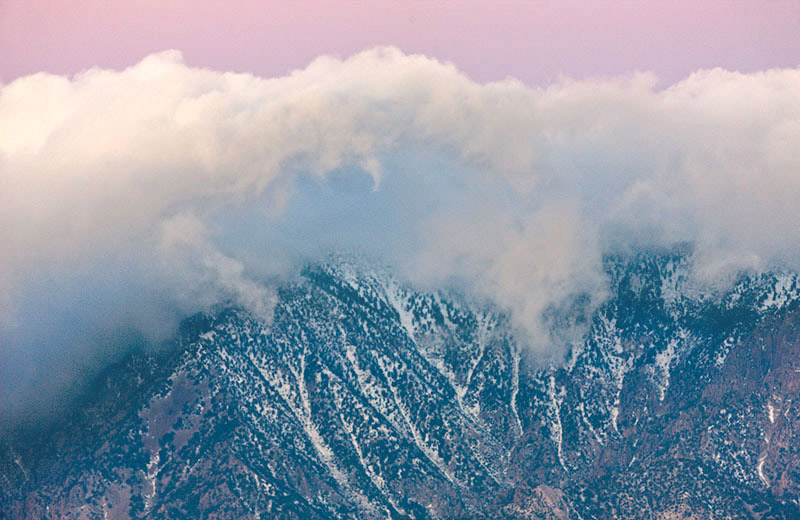Stephen Johnson Photography News
October 2017
Humpback Whale Tail. Monterey Bay, CA. 2017. Canon 1Dx II.
Next Workshop:
Welcome to the October 2017 Edition of the Stephen Johnson Photography Newsletter.
I've been reflecting on why some places keep drawing me back to them. It is not just their sheer beauty, but something more compeling. Point Lobos and Death Valley are two of these places.
— Steve
This month's View From Here column explores some places I keep returrning to, offering workshops, and gaining nourishment for the soul. We hope you find the column interesting and will consider sending us some comments.
FEATURED PRINT October 2017
Humpback Whale Tail. 2017.
Canon EOS-1Dx II
9.5x14 Pigment Inkjet Print on Cotton paper
$195 each.
A day filled with whales and sea lions on Monterey Bay.
Humpback Whale Tail. Monterey Bay.. 2017.
Canon 5DSr.
LATEST NEWS:
I just finished work on a new Pacifica book, a gathering of work from my Pacifica Calendar series over the last few years and other photographs I've made in the course of living here for 30 years. I'm happy to have Ben Pease's great trail map as part of our outreach to bring attention to the natural wonders of Pacifica.
2018 Workshop Schedule is building with these and other great courses coming up. See what a great experience students have had on Steve's Workshops by exploring Workshop Testimonials.
Upcoming Events & Workshops
Custom Workshop Scheduling: We have set up polls for recently requested workshops to see who might be interested and able to make some dates:
Steve with the Fine Art Printing Workshop in early May 2017.
The Studio, Scholarships and Mentoring
As part of our ongoing commitment to photographic education, there is one student scholarship spot in many of our classes. Please pass the word along.
For discounted time studying with Steve, keep in mind our Mentoring Program.
With all of our busy schedules and limited budgets, destination workshops or classes become a challenge, but many of you still have questions you need answered, or feedback on some new work. We want to remind you of our Virtual Online Consulting Program. This service allows all of you out there around the globe to consult online live with Steve on technical, aesthetic and workflow issues using Skype and your webcam.
Our Essays and Tutorials from the past couple of years can now be found on our Newsletter Archive and some on Google Blogger.
We hope you can come by the gallery and see the new Panoramic Prints we've added to the National Parks Gallery, and the Exquisite Earth exhibition with its accompanying very special Exquisite Earth Portfolio 1. We invite you to join us on a workshop, rent lab space, or just say hello and let us know what you are up to photographically and what you might like to see us offer. We value your input.
NEW PHOTOGRAPH
Lightning. Pacifica. 2017.
Canon 1Dx II
Death Valley from Dante's View. 1998.
BetterLight 4x5 Scanning Back.
China Cove Cave. Point Lobos. 2017.
Canon 5DSr.
THE VIEW FROM HERE
by Stephen Johnson
Travels of Late and Two of My Favorite Places
The workshop in Point Lobos Big Sur last month and a Whale Watching Voyage into Monterey Bay accounted for much of my travel recently. The Point Lobos trip led me down a path of thinking through why I keep returning to a few special places, and teaching there. Point Lobos and Death Valley came to mind.
Surf and Rocks, Cypress Cove. Point Lobos. 2017.
Canon 5DSr
Floating Stone and Pond. Point Lobos. 1978.
Mamiya RB67 with Ilford FP4 120mm film.
Point Lobos
The history of west coast landscape photography and Point Lobos are inextricably intertwined. And for the good. One could argue that seeing abstraction in landscape photography might have been born here. The long list of influential photographers that have worked here is impressive, Edward and Brett Weston, Ansel Adams, Morely Baer, Wynn Bullock and many of their aesthetic decedents.
Point Lobos is a place full of color, and flowing over with design and abstraction opportunities that sing in black and white. It is a place that I have been visiting since 1974 and a place that helped make me a photographer. I still appreciate photographs I made there almost 40 years ago. Although I feel I've never adequately portrayed the depth of my feeling for the place.
Point Lobos was certainly one of the places I spent time with with my early 4x5 and medium format cameras following a path so many landscape photographers have gone down. Over many years I kept coming back, trying still to understand how to render this complex place and see it in my own way.
Scanned Proof Sheet. Point Lobos. 1978.
Mamiya RB67 with Ilford FP4 120mm film.
Sensual Stone. Point Lobos. 1997.
Kodak DCS 460m.
Thinking a bit about that history, I dug out the roll of film with the floating stone and scanned it. It was interesting to me that there were additional photographs beyond the two I chose at the time with possibilities that I had not noticed. The exposures were varied, some almost invisible on the original proof, and that might have discouraged me at first glance. But now, if only there was time, I could go back and explore a few of the other photographs with the digital capabilities to handle under and over-exposure with more finesse. Such curiosity comes mostly from trying to understand the evolution of my seeing.
As the digital transition began, I spent more time at Point Lobos in the mid-1990s with BW digital cameras like my Kodak DCS 460M and my high resolution BetterLight Scanning Back with its wild distortion of the moving surf.
Point Lobos Scanning Camera Panoramic 1996.
BetterLight Scanning Back.
Wildly Distorted Surf Rendered by Scanning Camera, CA. 1994.
BetterLight Scanning Back.
This land has long seen human occupation, dating back at least 2500 years. In the 19th Century it was the subject of Mexican land grants, a Whaling station, an Abalone Cannery, and cattle farm. Subdivision plans and sales began in 1888, a subdivision buy-back in 1898, and its first gates charging visitors admission to the private land in 1899 by then owner A.M. Allan.
Point Lobos has been long recognized for it unique setting and beauty. Painters, poets and photographers have been making their way there for more than a century. Point Lobos became a California State Reserve in 1933. It has been a setting for movies, both dramatic and documentary. Scenes from the 1946 documentary "The Photographer" featured Edward Weston working at Point Lobos.
Edward Weston, Point Lobos. 1946.
from the 1946 documentary "The Photographer"
The rocks of Point Lobos are famous. It's Cypress trees are often called expressive. But there are so many nuances to this place. Many years ago, I became curious about the orange moss on seaside trees along the Central California Coast. This carotene encrusted algae, Trentepohlia, is quite curious and beautiful.
Fantasy forests bubbled in orange and draped in ghostly moss make for a strange and exotic experience. You almost wonder if you've walked into a scene from "Alice in Wonderland." The complexity is quite challenging photographically, but is well worth working your position, careful depth of field control, while keeping an eye out for over-exposed highlights.
Trentepohlia and Moss on Trees. Point Lobos. 2017.
Canon 5DSr.
Whalers Cove Trail. Point Lobos.. 2010.
Canon EOS 5D Mark II.
Successions of towers and cliffs are often defined by layers of mist. Sea lion barks and gull calls fill the air. Kelp drifts and swirls in the surf, rising and falling with each surge. Sea palms resist the surf and always seem to bounce back under the onslaught.
Crashing Surf. Point Lobos.. 2010.
Canon EOS-1Ds Mark III
The crashing surf can suddenly fill the sky. Care must be exercised near the water's edge. But that very edge is often exactly where our cameras are drawn.
The park is often bathed in fog. It is then that the elaborate rock forms can really sing in their strangeness and abstraction. Sunlit shadows often break the form, and naturally change the design completely.
Rocks and Surf. Point Lobos. 2010.
Canon EOS-1Ds Mark III
The colors are largely orange and blue. But then, on closer looks reveal shades of turquoise.
Reflections. Point Lobos. 2013.
Canon EOS-1D X.
The sea defines this place–the roll and surge of the Pacific surf, the ever changing reflections of sky, rocks and sea.
Rock Pattern. Point Lobos.. 1984.
Mamiya RB67 Kodak Vericolor 120mm film.
The rocks may draw people to Point Lobos more than any other single feature. The park consists of igneous, sedimentary and metamorphic rocks. The igneous rocks are a form of granite, the sediment is largely sandstone with both both shale and fossilized mud-stone.
Much of the granite is part of the North American Plate that broke off from southern California by the collision with the Pacific Plate. see Point Lobos Geology
The science of the rocks is fascinating, but it is the complex sensual forms they embody that has been part of the magical draw of this place.
Rock Pattern. Point Lobos.. 2016.
Canon EOS 5DS R.
Harbor Seals and Rocks, Point Lobos. 2008.
Canon 1Ds Mark III
Sea lions, pelicans, otters, gulls, cormorants, occasional dolphins and whales grace this park. On workshops I've witnessed harbor seals giving birth and whales breaching on the horizon.
Sometimes, it is the remains of life along the seashore that becomes the irresistible subject matter. In the case of this bleaching sea lion, it was emotionally hard and seemed somewhat exploitative to photograph it. But not to photograph would have also been a shame. It is the design that makes the photograph work for me, but the emotional content that makes me care.
Sea Lions Corpse on Rocks, Point Lobos. 2008.
Canon EOS-1Ds Mark III.
Sea Lions Corpse on Rocks, Point Lobos. 2008.
Canon EOS-5DSr.
I am grateful for every chance I get to explore Point Lobos. Perhaps some of you might want to join me on our next workshop there.
Death Valley
Death Valley is an exquisite place. This desert is vast and the landscape so strange and complex that it feels like another world. In fact, Death Valley has been the setting for many science fiction movies and television, from Stars Wars to the Twilight Zone. It feels other worldly.
From fields of dunes to twisted towering mountains, and views that can encompass a hundred miles of visibility, Death Valley is a place I do feel compelled to return to.
Hills. Zabriski Point. Death Valley. 2013.
Canon EOS-1Ds Mark III.
Mosaic Canyon. Death Valley. 2012.
Canon EOS-1Ds Mark III.
The complex canyons are a large part of the lure of this place.
Amargosa River Channels from Dante's View. Death Valley. 2016.
Canon EOS 5DS R.
Every visit to Dante's View, a mile above the valley floor, brings with it the wild view of the salt flats of the Amargosa River and the extensive flood plain below.
On workshops, we often go up to Dante's View for dawn to watch the moon-set and sunrise on the mountains to the west. It can be bitter cold on at that 5000 foot precipice. The light changed amazingly fast on this band of blowing clouds above hanging on the Panamint Mountains.
Clouds over Panamints, Dawn. Death Valley. 2013. Canon EOS-1Ds Mark III.
Full moon over Mesquite Flat Dunes. Death Valley. 2016.
Canon EOS 5DS R.
The star-filled nights are startling. We are simply unaccustomed to dark clear skies, and Death Valley can provide such a setting making for amazing night time photography.
Abstraction and sensuality abounds in the dunes and canyons. The dunes are a visceral draw to Death Valley, the other worldly quality of walking out on the rolling sand is a journey I never tire of repeating. The dunes are a journey into light, design, and abstraction. The dramatic evolution from pre-dawn to dawn is amazing in its total change of perspective and depth perception.
Morning Dunes. Death Valley, CA. 2016.
Canon 5DSr.
Titus Canyon. Death Valley, CA. 2012.
Canon EOS-1Ds Mark III.
Death Valley is a giant earthworks turned upside down and sideways. Titus Canyon cuts down though an upheaval of rock and time. A drive through the canyon feels like a journey through the geologic evolution of the earth.
Death Valley's winter weather can be quite dramatic. Storms can roll across the valley, clouds climbing over the Panamint Mountains to the west. Over the years, I've seen everything from blank blue skies, to snow, thunderstorms and overcast bathing the valley in soft color glowing light.
Layered Mountains in the north valley. Death Valley National Park.. 2017.
Canon 5DSr.
Eroded Hill at Golden Canyon. 2017.
Canon 5DSr.
Scale can be quite ambiguous in Death Valley. Hills that seem towering may not be at all large. Distances seen are way beyond our normal experience, and can stretch to more than a hundred miles.
Highway, Ridge-line and Hills. Death Valley. 2012.
Canon EOS-1Ds Mark III.
This scene on the Badwater Road was irresistible on the Death Valley workshop in 2012. The valley is constantly challenging our perceptions of space and distance.
That same space can often be classically defined here by ever-more pastel layers of light and color stretching to the horizon.
Succession of Ranges. Dante's View. Death Valley National Park. 2016.
Canon EOS 5DS R.
Full Moon and Clouds. Death Valley National Park. CA. 2016.
Canon 5DSr.
Death Valley Storm Clouds. 2013.
Canon EOS-1Ds Mark III
Red Pass. Entrance to Titus Canyon Road. Death Valley. 2007.
BetterLight Scanning back.
Ubehebe Wall. Death Valley. 2016.
Canon 5DSr.
I'm always drawn to the strange eroded crater sides of Ubehebe Crater. The 2000 year old crater blasted through an amazing layering of land formations now revealed. In soft light, they are clear and deeply intriguing. In sunlight, the shadows of the erosion often overwhelm them.
I was careful in my exposure and processing to keep the emphasis on the layering and minimize the visual impact of the shadows by keeping them as open and detailed as possible.
I look forward to my return to Death Valley for our 2018 workshop.
On Monterey Bay
Our Whale watching cruise in late August was a wonder of whales and sea lions.
There are so many photographs I am interested in from this outing, that a real exploration of the work will have to come later. I already put them off from the September Newsletter though, and couldn't resist adding a few scattered through this issue.
Two Humpback Whales. Monterey Bay. 2017.
Canon 1Dx Mark II
Porpoising Seal Lions. Monterey Bay. 2017.
Canon 1Dx Mark II.
Humpback Whale and Seal Lions. Monterey Bay. 2017.
Canon 1Dx Mark II.
We took a Blue Ocean Whale Watching Tour and had a great time.
More later.
Featured Products
New Exquisite Earth Exhibition Catalog
Page 41
page 13
The Exquisite Earth Exhibition Catalog
As I've been on a roll on fixing bodies of work into POD books, I decided before the Exquisite Earth show could come down for new upcoming show, I wanted to create a printed record. So, now available is the 56 page 11x17 wire bound book, 5 years of work from 2005 to 2010 traveling this wondrous planet.
- Photographs from 2005-2010
- 56 pages
- 11x17 wire-bound book
- $50
New Pacifica Book
Page 27
Page 7
- 74 pages
- 11x17 wire-bound book
- Pacifica Trail Map
- 32 years in Pacifica
- 10 years of calendars
- $75
Pacifica Trail Map by Pease Maps special to the Pacifica Land Trust.
11" x 17" folded
$10 (free shipping) proceeds go the Pacifica Land Trust a non-profit 501c3.
20 scenes in and around Pacifica, California where Stephen Johnson Photography is located. Full page trail map included. Printed on a color laser digital press.
11" x 17" $25.00
Gift Certificates for Prints and Workshops!
Emailed or shipped with beautiful gift note card.
Life Form Note cards
5x7 inches (sold-out, on backorder)
$25
12 image Note card set with envelopes featuring photographs from Steve's new Life Form work.
Printed by Steve in his studio in very limited numbers on a color laser digital press
National Park Note cards
National Park Color Note Card Set
Stephen Johnson
12 cards/envelopes $20 set
From "With a New Eye" Beautiful 300 line screen offset reproductions with envelopes in clear box. A great gift.
NEWSLETTER ADMINISTRATION
We've sent you this newsletter because, at some point, you told us you were interested in hearing from us.
If you'd like to unsubscribe, change your email address, or give us comments about the newsletter, please send a note to lists@sjphoto.com.






























































Three Days in Point Lobos. Carmel and Big Sur. Fieldwork at the park and visits to Carmel Galleries. Lectures and presentations.
Ansel Adams called Pt. Lobos "the greatest meeting of land and sea" on earth. It is truly an amazing combination of rock, surf, wildlife, changing light and abstraction...aqua surf, orange lichen, organic rock forms and waving sea palms. We'll walk the trails, wander the rocks, get lost in form and light.